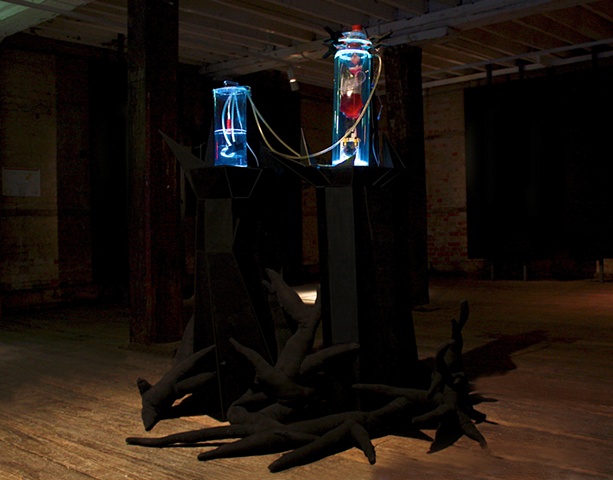The Vision Splendid
Portable bioreactor housing living human tissue (the artist's own skin tissue, taken via shave biopsy), MDF, felt.
The glass bioreactor system is an artificial body of sorts. It is a sterile low-fi instrument operating at 37 degrees Celsius (human body temperature). It acts as an accessible alternative to a laboratory incubator, in its ability to support living mammal tissue, and additionally allows for the viewing of biotech processes, living cells, and tissue forms in public spaces such as galleries.
This incantation of the bioreactor in The Vision Splendid houses the artist's own living skin cells, growing into a biodegradable polymer 3D form of a grotto, with handmade glass bones. As the cells grow into tissue membrane, the polymer dissolves and the membrane becomes a flesh form. The cells derived from a skin biopsy taken by a surgeon. Post-surgery the skin sample was taken immediately to the UTAS School of Medicine Pathology lab to begin culturing.
The life of the tissue sculptures last long enough for them to reach their sculptural resolution. They are then removed to become reliquaries, housed in formaldehyde in ritualistic glass vessels.
This project was researched and developed at SymbioticA: the Centre of Excellence in Biological Arts in the School of Anatomy and Human Biology at the University of Western Australia.
The bioreactor was developed as part of an ongoing research project of the SymbioticA Research Group (SARG). This version is a collaboration between SARG, Alicia King and Matt Johnson.
